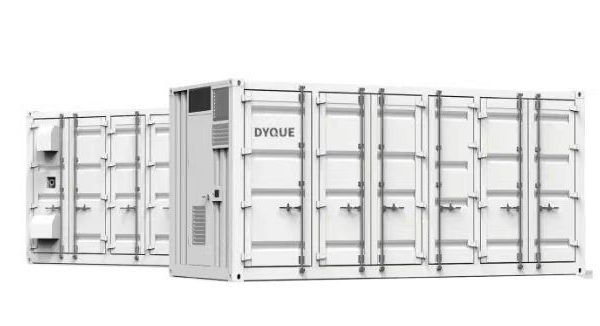In Energy Storage, Renewable Energy, and Battery Energy Storage Systems (BESS) Trade
In international energy storage and renewable energy trade, Telegraphic Transfer (T/T) is one of the most widely used payment methods. It is simple, fast, and familiar to buyers and suppliers alike. However, like any payment method, T/T has its advantages and risks.
Understanding these is essential for BESS manufacturers, EPC contractors, and component suppliers to manage cash flow, reduce risk, and maintain healthy buyer relationships.
1. What Is T/T Payment?
Telegraphic Transfer (T/T) is a bank-to-bank wire transfer, usually in USD, EUR, or other major currencies.
Typical structure in BESS trade:
- 30% advance payment (deposit) before production
- 70% balance before shipment
T/T can also be split differently, e.g., 20%-50%-30% for larger projects with multiple milestones.
It is faster and less costly than a Letter of Credit (L/C), which makes it the default for many international B2B deals.
2. Pros of T/T Payments
✅ 2.1 Fast and Efficient
- T/T transfers usually clear within 1–3 business days for international banks.
- No complex documentation or bank approval processes like L/C.
- Suitable for small to medium-sized BESS orders (10–500 kWh systems) or spare parts shipments.
✅ 2.2 Low Bank Fees
- Generally 0.1%–0.5% per transaction (depending on banks and currencies).
- Cheaper than L/C, which may charge 1–3% of total contract value.
✅ 2.3 Widely Accepted
- Almost all buyers and suppliers are familiar with T/T.
- Easy for repeating transactions and long-term customers.
✅ 2.4 Flexible Payment Splits
- Suppliers can customize split percentages to balance cash flow and buyer confidence.
- Example: 30% deposit to start production, 40% after inspection, 30% before shipment.
✅ 2.5 Simplified Contracting
- Less paperwork reduces administrative burden.
- Especially useful when shipping standard BESS modules or inverters where documents are straightforward.
3. Risks and Challenges of T/T Payments
❌ 3.1 Risk of Non-Payment for Balance
- For new buyers, the supplier may ship goods but the remaining 70% is delayed or unpaid.
- This risk is higher with first-time, cross-border customers.
❌ 3.2 Limited Protection in Case of Dispute
- Unlike L/C, T/T relies on trust between buyer and supplier.
- If there is a dispute (e.g., damaged goods or non-conforming specs), banks cannot block payment.
❌ 3.3 Exchange Rate Volatility
- International T/T often involves currency conversion.
- Suppliers may face losses if payments are delayed and the USD/Local currency rate changes.
❌ 3.4 Limited Recourse
- If a buyer refuses to pay after shipment, suppliers may need legal action in the buyer’s country, which is costly and time-consuming.
4. Best Practices for Using T/T in BESS Trade
4.1 Use Deposit + Balance Structure
- 30/70 or 50/50 split protects suppliers while providing buyers a sense of security.
- For very large projects, consider milestone-based splits.
4.2 Verify Buyer Credibility
- Check references, credit rating, or trade history.
- Use trade platforms, chambers of commerce, or industry contacts.
4.3 Communicate Clearly
- Include payment terms in Proforma Invoice (PI) and contract:
- Deposit percentage
- Balance due date
- Bank details and currency
4.4 Combine With Risk Mitigation
- For high-value shipments, consider:
- Export credit insurance
- Partial L/C for first-time buyers
- Third-party escrow services
4.5 Monitor Currency Fluctuations
- Quote in stable currency (USD or EUR).
- Adjust prices or use forward contracts for large orders to hedge currency risk.
5. Comparing T/T With Other Payment Methods
| Payment Method | Speed | Cost | Risk Protection | Suitable For |
|---|---|---|---|---|
| T/T | Fast (1–3 days) | Low | Medium (depends on split) | Small to medium BESS orders, repeat customers |
| L/C | Moderate (3–7 days or more) | High | High (bank guaranteed) | Large projects, new buyers, government tenders |
| D/P | Moderate | Medium | Medium | Known buyers, commodity components |
| Open Account (O/A) | Slow | Low | Low | Long-term trusted partners, established buyers |
T/T is fast and convenient, but less protective than L/C. It works best when trust exists or risk is shared through deposit splits.
6. Communication Tips With Buyers
When discussing T/T:
- Highlight simplicity and efficiency:
“We use T/T to simplify the transaction. 30% deposit before production, 70% balance before shipment. This ensures fast delivery without complex bank procedures.”
- Address trust and risk:
“For new buyers, we recommend a small advance to start production, and the balance after inspection or receipt of shipping documents.”
- Avoid sounding rigid: Offer options like milestone splits to balance buyer comfort and supplier security.
7. T/T in Large vs. Small BESS Orders
- Small/Medium Projects: 10–500 kWh systems, modules, inverters — T/T works well due to lower financial exposure.
- Large-Scale Projects: 1–50 MWh or utility-scale — T/T alone is risky; consider hybrid methods: partial T/T + L/C or milestone payments.
8. Key Takeaways
- T/T is simple, fast, and cost-effective — the default choice for many BESS transactions.
- Risk increases with order size and first-time buyers.
- Mitigate risk via deposit + balance, verified buyers, currency hedging, or partial insurance.
- Clear communication in contracts and PIs is essential.
When used properly, T/T allows suppliers to speed up production and shipment, maintain cash flow, and satisfy buyers without the complexity of bank-backed L/Cs.
For energy storage, renewable energy, and BESS suppliers, T/T is a reliable workhorse payment method — but not risk-free.
The key is to:
- Adjust deposit/balance splits to the buyer’s risk profile
- Verify credibility of new customers
- Document terms clearly in invoices and contracts
- Combine with risk mitigation tools for larger orders
Used wisely, T/T can balance speed, convenience, and financial security, making it one of the most effective payment methods in the global energy storage trade.









